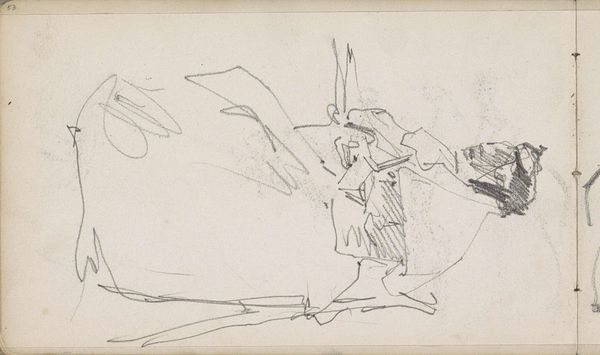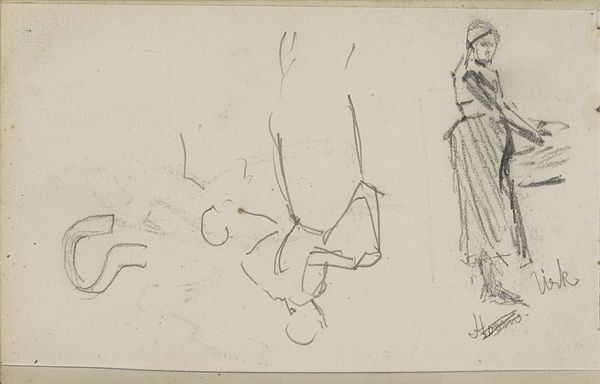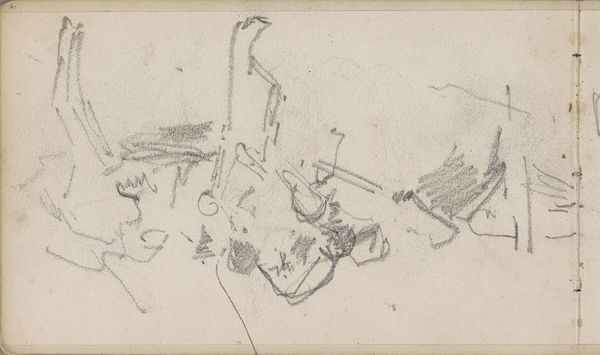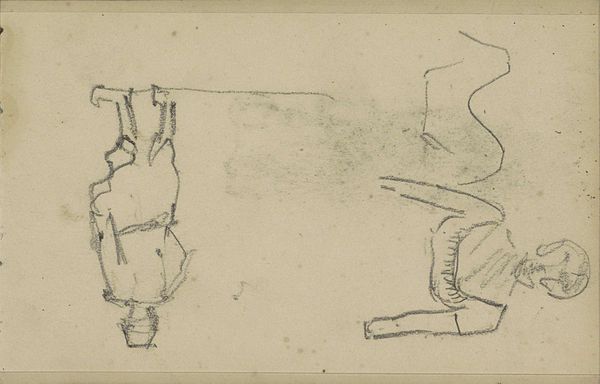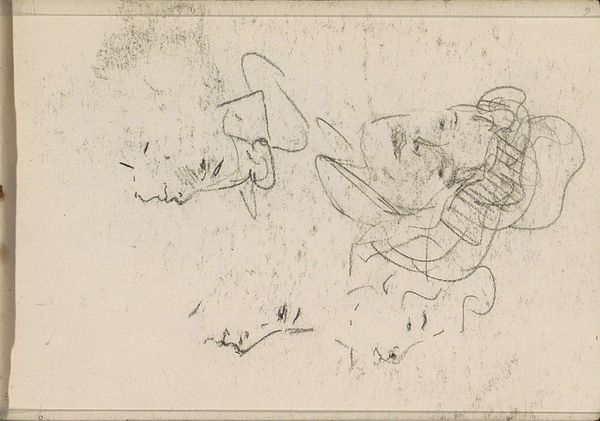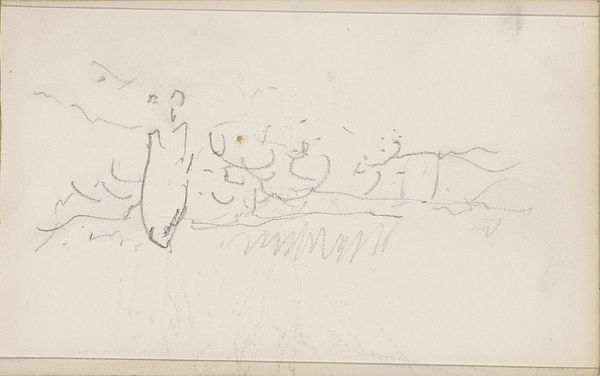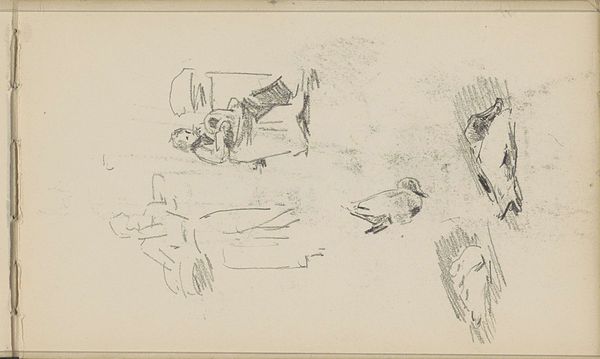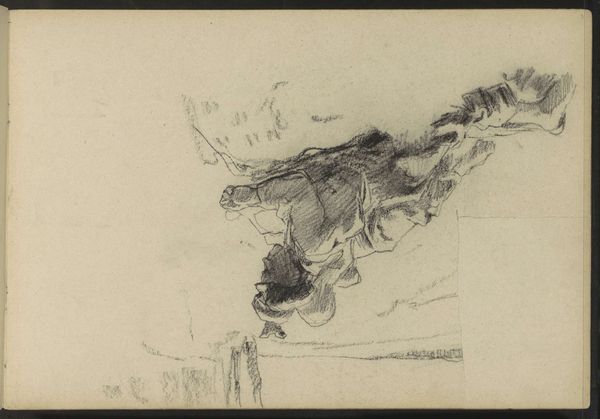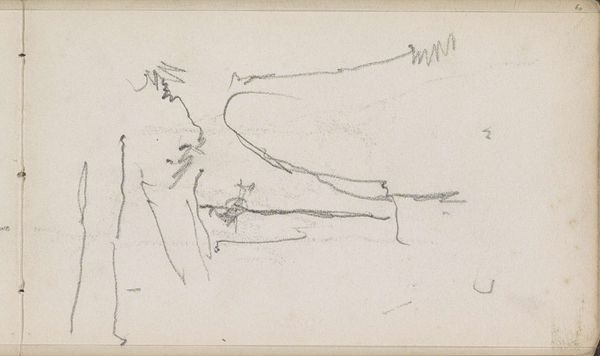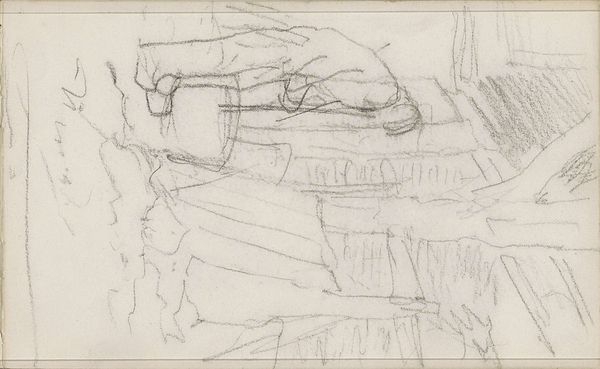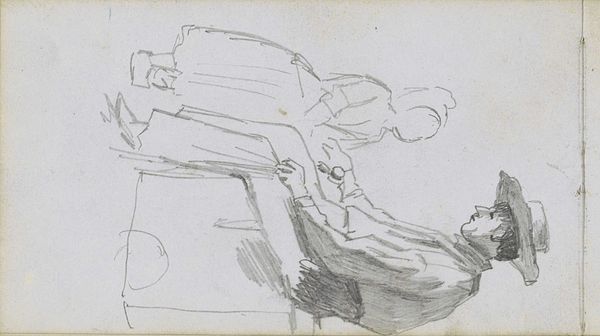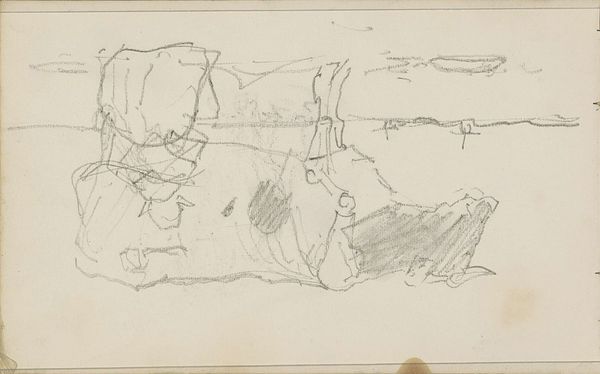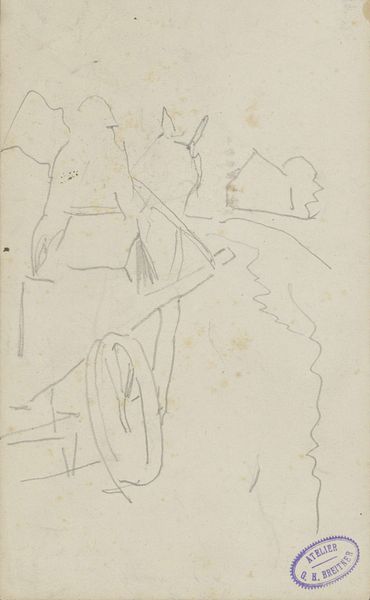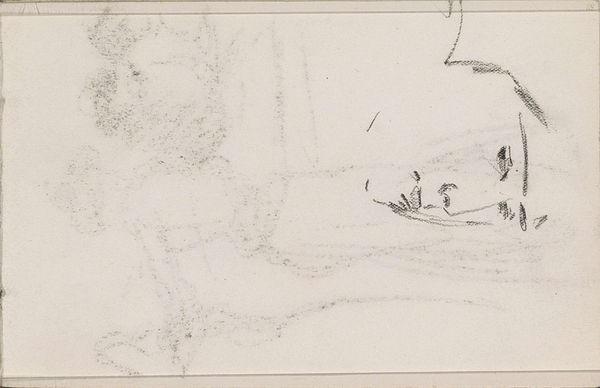
drawing, pencil, graphite
#
drawing
#
amateur sketch
#
light pencil work
#
landscape
#
figuration
#
personal sketchbook
#
idea generation sketch
#
sketchwork
#
ink drawing experimentation
#
pen-ink sketch
#
pencil
#
graphite
#
sketchbook drawing
#
sketchbook art
#
realism
#
initial sketch
Copyright: Rijks Museum: Open Domain
Curator: This pencil drawing, entitled "Man lopend achter een kruiwagen," was created by Anton Mauve sometime between 1848 and 1888. It now resides here at the Rijksmuseum. Editor: Oh, it’s so raw. I feel like I'm peeking into the artist’s mind. It has a quiet, almost melancholic mood, don’t you think? Just the basic shapes captured here, in this faded, slightly haunted light... Curator: Absolutely. And if you consider Mauve’s later involvement with the Hague School, known for its depictions of somber landscapes and peasant life, this early sketch is indicative of a sustained engagement with labor and the working class. There's a definite political dimension here, even in its simplicity. Editor: I like how the lines are so tentative, like he's feeling out the weight and the strain. There's no attempt to glamorize or romanticize. It's the simple beauty of someone working, and Mauve just grabs that humble fleeting moment, using almost child-like strokes, as if scribbling in the dark! Curator: Indeed. It lacks the polished finish of a commissioned piece, hinting instead at a private observation, perhaps an exercise in realism before moving on to more idealized representations. But even here, the socio-economic implications of manual labor are subtly present. He’s recording how these subjects fit in this social class of the day. Editor: Right! A kind of early note capturing everyday realities. I almost wish I knew the context, because in its immediacy, there's such open beauty—a visual poem that reminds you about your parents' work life. Like the earth tones sing something about resilience and patience. Curator: Considering Mauve's milieu—the growing industrialization and its effects on agrarian societies—this drawing resonates with the broader social issues of the period. The plight of the working class was a topic of increasing concern. And art gave a platform. Editor: Ultimately, what I get from it is a genuine sensitivity. As though, in his initial observation, before refinement, Mauve shows us not just a laborer but a glimpse of human persistence and struggle, wouldn’t you agree? Curator: Precisely. The piece really shows that early-stage creative work isn’t separate from broader socio-political concerns. Art is in constant conversation with both past and future, revealing core values of all concerned. Editor: Well put. And here I was just loving those soft pencil lines. See what I mean? You've turned something quite sentimental into quite an analytical consideration of 19th-century economics.
Comments
No comments
Be the first to comment and join the conversation on the ultimate creative platform.
